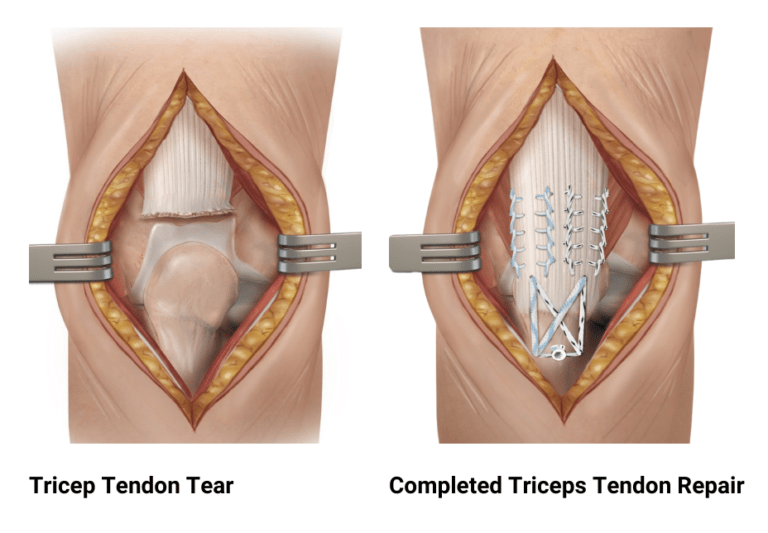What is it?
The triceps muscle functions to extend the elbow. The end of the muscle, the distal triceps tendon, attaches onto a bone in the forearm (the olecranon). Distal triceps ruptures are rare injuries caused by a sudden trauma to the elbow, when the elbow is forced to bend while performing a pushing or pressing activity.
WHAT ARE SIGNS AND SYMPTOMS OF A DISTAL TRICEPS TENDON RUPTURE?
Common symptoms of distal triceps tendon ruptures include:
• Sudden pop in the back of the elbow
• Bruising and swelling of the elbow
• A bulge in the upper arm
• Difficulty or weakness extending the elbow
Diagnosis
In the office, a complete history and physical exam is obtained. Careful measurements of range of motion and strength are recorded. A palpable gap between the tendon and the back of the elbow can be sometimes felt. Diagnostic imaging, such as X-rays and MRI, can be helpful to confirm the diagnosis.
Treatment
Nonoperative treatment of triceps ruptures is recommended in partial tears or in lower demand patients. Such treatments include a brief period of immobilization, ice, anti-inflammatories, and physical therapy.
Surgical treatment of distal triceps rupture is recommended in patients with complete ruptures or who have failed conservative treatment. Distal triceps repair is performed by reattaching the tendon back to the bone with either suture anchors or bone tunnels. This is typically done in an outpatient setting under regional anesthesia, allowing patients to return home the same day. In conjunction with supervised physical therapy, distal triceps repair has been shown to successfully alleviate pain and improve strength.

RECOVERY
Following surgery, patients are immobilized in a splint for one week and then transitioned into a brace for 6-8 weeks. Physical therapy begins around 1-2 weeks after surgery. Range of motion is initiated at this time, followed by strengthening at 12 weeks. Patients generally return to activities at about 5-6 months postoperatively.
